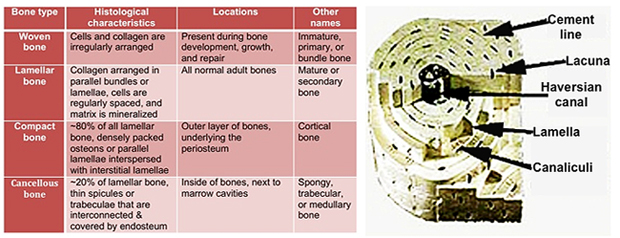|
Bone is a specialized
connective tissue that is the main component of the skeleton. It has
several key functions in the body; it provides support and
protection, it possesses marrow cavities that provide an appropriate
microenvironment for hematopoiesis, it serves as a reservoir of
calcium and phosphate, and it allows for body movements. Bone is a
particularly unique connective tissue because its extracellular
matrix is mineralized. Mineralization of the ECM, the presence
of abundant type I collagen fibers, and the organization of
these components into osteons or Haversian systems impart
tremendous strength and rigidity to bone.
The organization of the cells and matrix
of compact bone into osteons or Haversian systems provides channels
for blood vessels, ensuring that osteocytes, the principal cells of
bone, can receive nutrients via canaliculi. Despite this
organization, compact bone is continuously remodeled, leading to the
presence of partial osteons or interstitial lamellae within compact
bone. Before we look at some
slides of bone, let’s review the types of bone in this table and
some bone terminology in this figure.

Compact bone. |